Structure of the Large Intestine
The large intestine can be divided into several main parts: the cecum, the ascending colon, the transverse colon, the descending colon, the sigmoid colon, and the rectum. The cecum is the first part of the large intestine and is connected to the small intestine. The ascending colon travels upward on the right side of the abdomen, the transverse colon runs across the abdomen, the descending colon travels down the left side of the abdomen, and the sigmoid colon is an S-shaped segment leading to the rectum.Functions of the Large Intestine
1. Absorption of Water and Electrolytes: The large intestine absorbs water, electrolytes, and vitamins produced by the gut microbiota, leaving a semi-solid waste material. 2. Formation and Storage of Feces: As the undigested food passes through the large intestine, it is formed into feces and stored until it is ready to be expelled from the body. 3. Microbiota and Fermentation: Beneficial bacteria in the large intestine aid in the breakdown of indigestible carbohydrates through fermentation, producing various compounds that can be beneficial to the body.Role in the Digestive System
The large intestine plays a crucial role in the final stages of digestion and the elimination of waste from the body. It works in coordination with the small intestine to process and absorb nutrients from food and to eliminate waste material.Study Guide for the Large Intestine
Key Concepts:
- Structure and parts of the large intestine - Functions of the large intestine - Role of the large intestine in the digestive system - Microbiota and fermentation in the large intestineKey Terms to Understand:
- Cecum - Ascending colon - Transverse colon - Descending colon - Sigmoid colon - Rectum - Absorption - Fermentation - FecesStudy Tips:
.◂Science Worksheets and Study Guides Fifth Grade. Elements, mixtures and compounds
Study Guide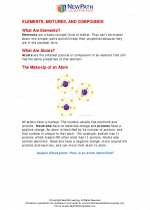 Elements, mixtures and compounds
Elements, mixtures and compounds  Activity Lesson
Activity Lesson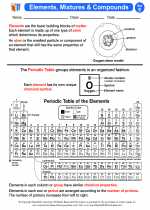 Elements, Mixtures and Compounds
Elements, Mixtures and Compounds  Worksheet/Answer key
Worksheet/Answer key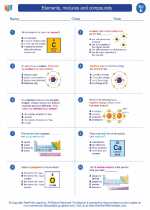 Elements, mixtures and compounds
Elements, mixtures and compounds  Worksheet/Answer key
Worksheet/Answer key Elements, mixtures and compounds
Elements, mixtures and compounds  Worksheet/Answer key
Worksheet/Answer key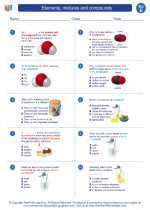 Elements, mixtures and compounds
Elements, mixtures and compounds  Worksheet/Answer key
Worksheet/Answer key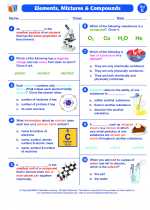 Elements, mixtures and compounds
Elements, mixtures and compounds  Vocabulary/Answer key
Vocabulary/Answer key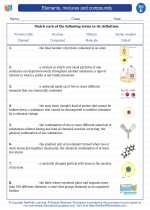 Elements, mixtures and compounds
Elements, mixtures and compounds  Vocabulary/Answer key
Vocabulary/Answer key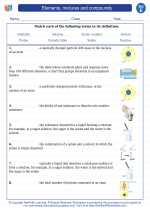 Elements, mixtures and compounds
Elements, mixtures and compounds 

 Activity Lesson
Activity Lesson
 Worksheet/Answer key
Worksheet/Answer key
 Worksheet/Answer key
Worksheet/Answer key
 Worksheet/Answer key
Worksheet/Answer key
 Worksheet/Answer key
Worksheet/Answer key
 Vocabulary/Answer key
Vocabulary/Answer key
 Vocabulary/Answer key
Vocabulary/Answer key

The resources above cover the following skills:
PHYSICAL SCIENCE (NGSS)
Matter and Its Interactions
Students who demonstrate understanding can:
Conduct an investigation to determine whether the mixing of two or more substances results in new substances.